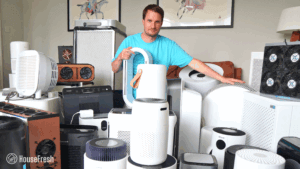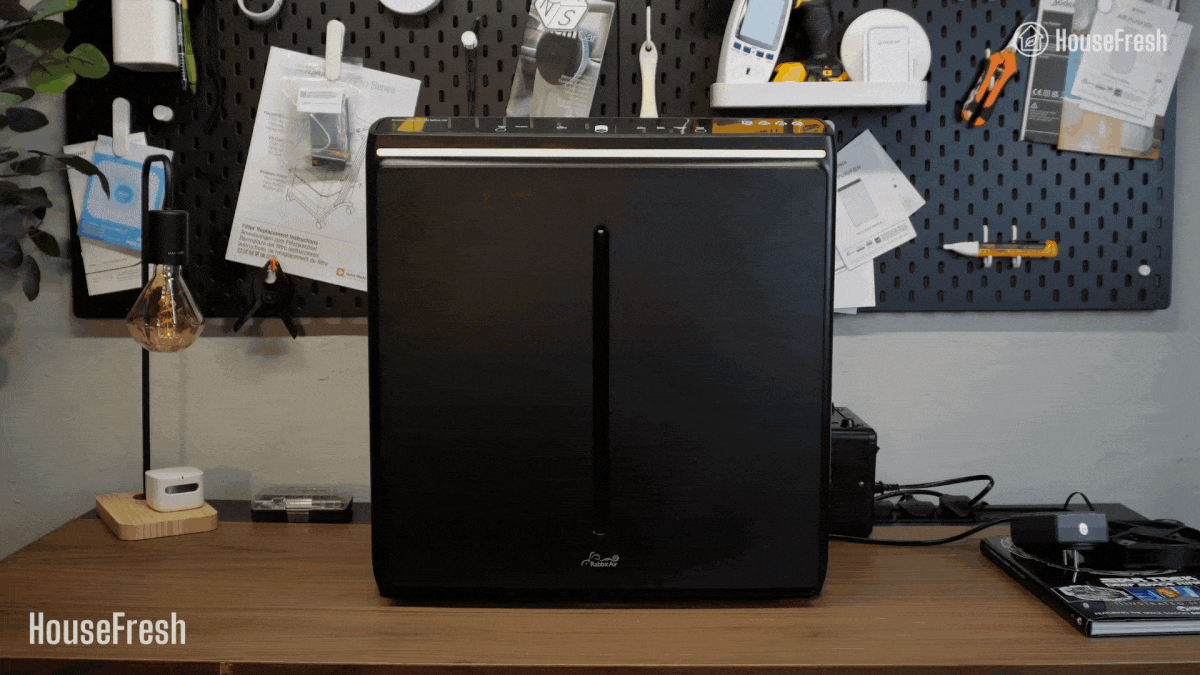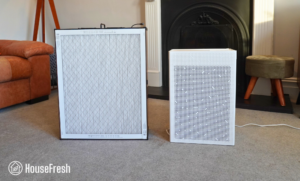The term ‘VOC’ stands for volatile organic compounds, which are gases that can contain various chemicals, some of which will be harmful to your health.
Many VOCs are human-made chemicals used and produced in the manufacture of pharmaceuticals, paints and refrigerants. But VOCs can also be created through chlorination in water treatments and contained in industrial solvents, pesticides, building materials and fuel.
These gases can enter your home through common household products you use daily, such as paints, cleaning products, and even beauty products like perfumes and nail polish, among many others. They can also enter your place of work through equipment like printers and photocopiers.
According to the U.S. Environmental Protection Agency, VOC concentrations can be up to ten times higher indoors than outdoors. Outside, VOCs usually dissipate without causing harm. But indoors, these chemicals can linger and cause adverse health effects ranging from headaches and throat irritation to kidney and liver damage.
If you don’t want to read my full article, have a look at the table below with my recommendations for the best air purifiers to deal with VOCs based on data from nearly 100 tests:
| BEST OVERALL | HEAVY VOCs OPTION | BUDGET OPTION | SMART OPTION | LARGE ROOM OPTION | |
|---|---|---|---|---|---|
| IQAir HealthPro Plus | Austin HealthMate | AirFanta 3 Pro | Levoit Core 400S | Smart Air Blast Mini | |
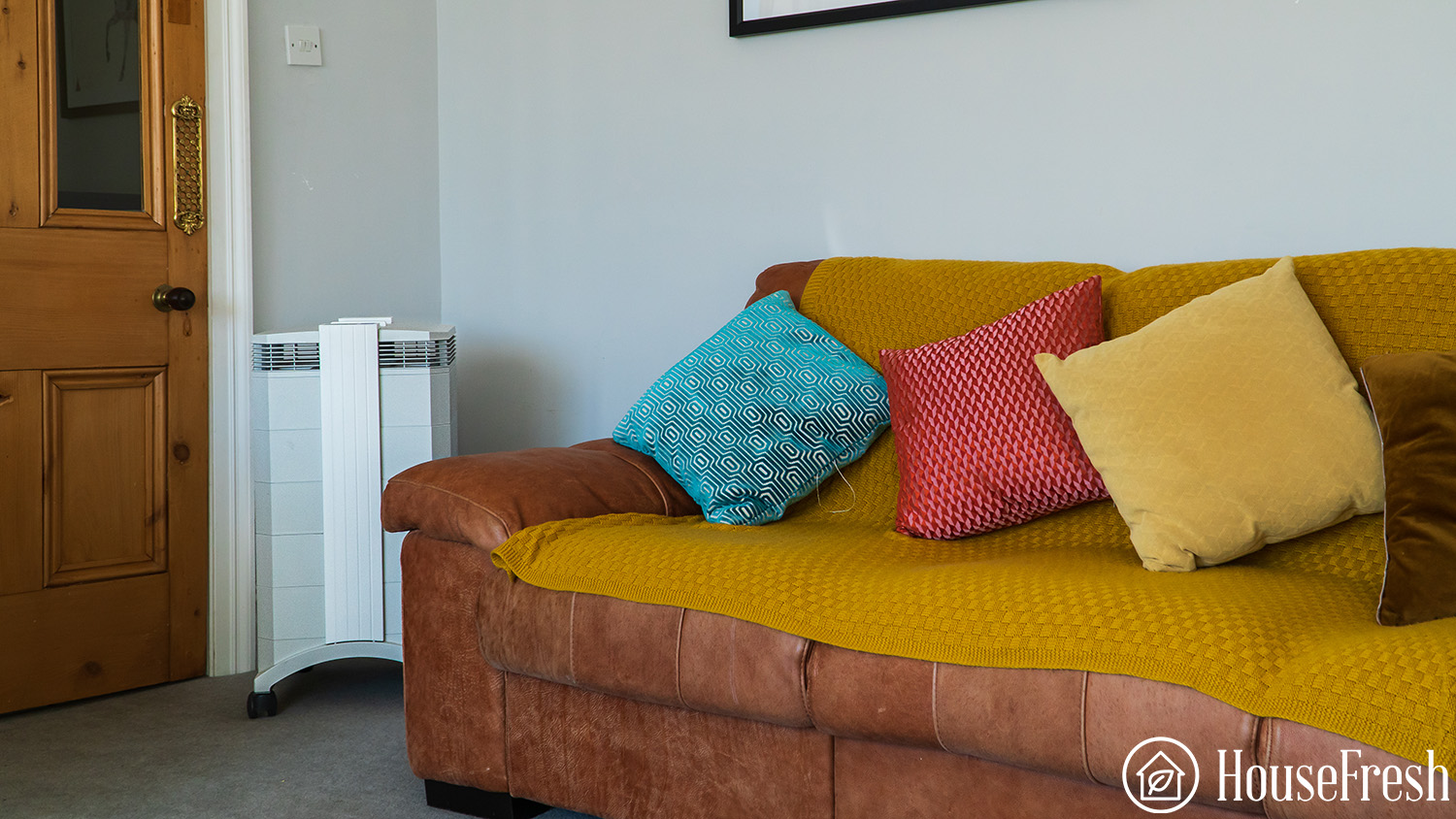 |  |  |  |  | |
| Time to PM1 zero | 28 minutes | 52 minutes | 17 minutes | 24 minutes | 15 minutes |
| HouseFresh CADR | 213 cfm | 156 cfm | 413 cfm | 213 cfm | 400 cfm |
| Filter tech | Hyper HEPA + V5-Cell carbon | HEPA + carbon | E11 HEPA and Pelleted Carbon | Bonded particle + carbon | H13 HEPA + carbon |
| Activated carbon amount | 5 lbs | 15 lbs | 0.5 lbs | 0.99 lbs | 1.56 lbs |
| Max room size | 319 sq. ft. | 234 sq. ft. | 671 sq. ft. | 319 sq. ft. | 600 sq. ft. |
| Yearly running costs | $421.47 | $283.03 | $125.23 | $157.94 | $285.29 |
| List price | $1,199.99 | $765.00 | $175.99 | $181.99 | $709.00 |
If you are dealing with serious VOCs, try to ventilate your house as much as possible by opening windows and doors.
This is especially important when using VOC-heavy chemicals like paint stripping or cleaning products. Always perform this type of activity with your windows open to let more air move inside your home.
It’s important to clarify that many of the most popular air purifiers you will find online or at your local appliance shop are designed to tackle other types of pollutants, such as pollen, dust or cigarette smoke. These devices may have excellent particle filters (such as medical-grade H13 HEPA), but you need to look for gas filters with large amounts of activated carbon.
With those disclaimers out of the way, let me tell you about the air purifiers we recommend to tackle VOCs indoors.
1. Best for most people: IQAir HealthPro Plus (5.5 lbs carbon)
With a high-quality HyperHEPA filter and packed with 5 lbs of activated carbon and zeolite, the HealthPro Plus is our top pick for dealing with VOCs.
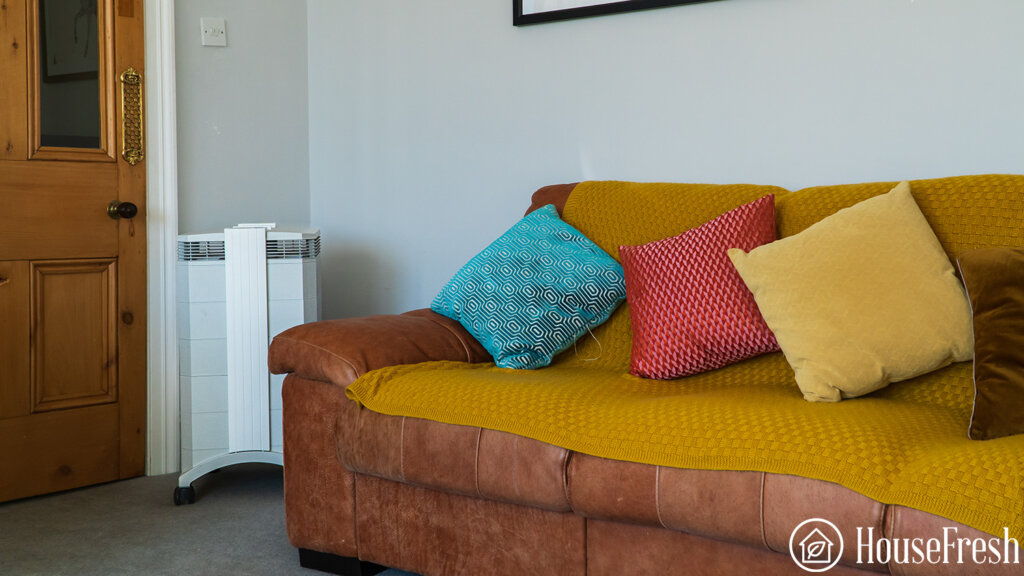
The HealthPro Plus from IQAir looks like a device from the 90s because it is: it was first released in 1998, and all those decades later, it is still one of the most recommended air purifiers in the world. This is a result of excellent build quality, a trustworthy brand, a very powerful fan, a unique HyperHEPA filter to capture the smallest of particles and an impressive gas filter for VOCs with 5 lbs of activated carbon and zeolite.
What we really like
What we think could be better
If you are looking for an air purifier that can clear the air from not only chemical gases and smells but also dust, smoke, pollen and allergens, then you should consider getting an IQAir HealthPro Plus.
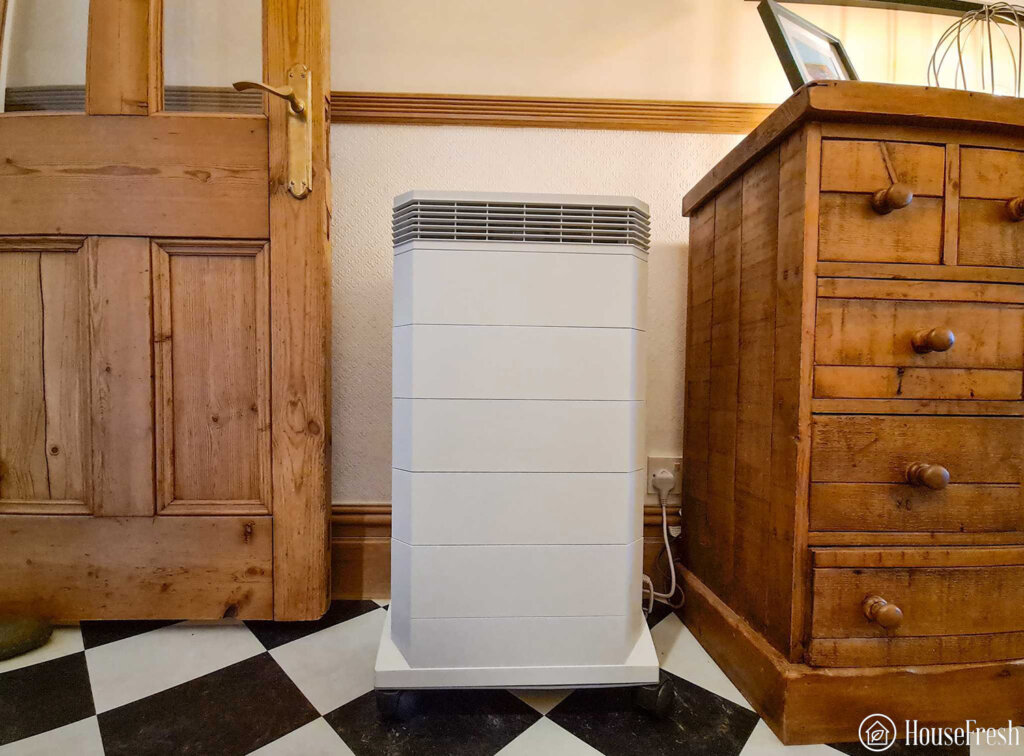
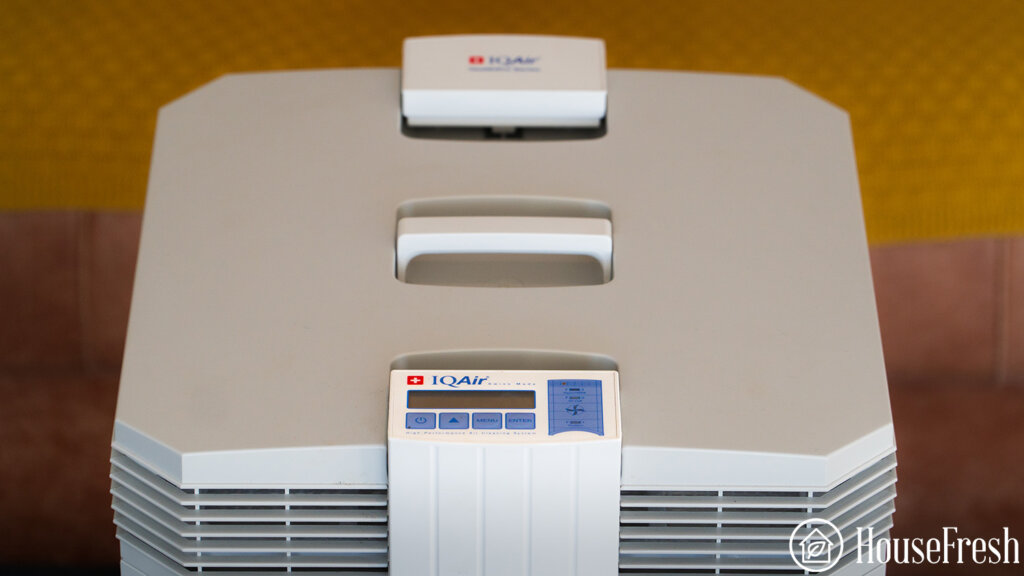
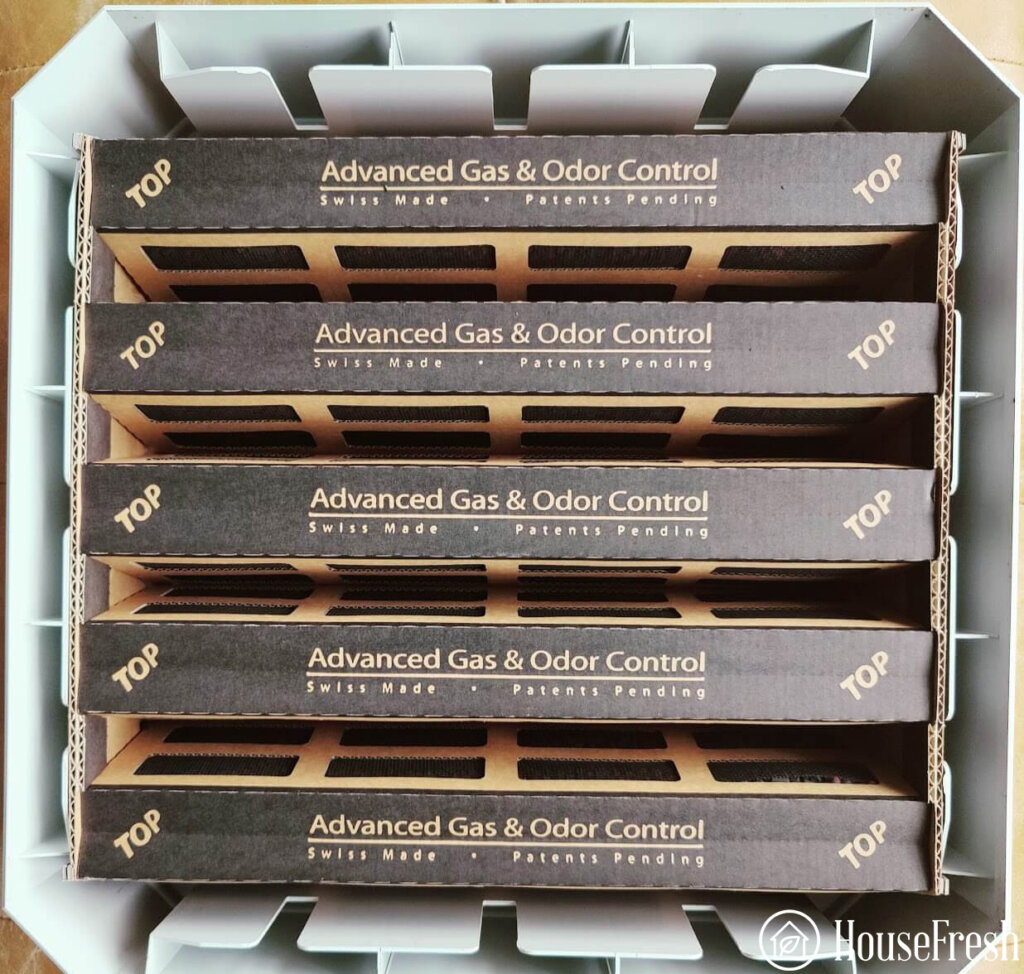
| Clean air delivery rate (CADR): | – Top speed PM1 CADR: 213 cfm – Sub-45 dBA PM1 CADR: 86 cfm |
| Filter technology: | HyperHEPA and V50-CELL with 5lbs of activated carbon + zeolite mix |
| Recommended room size: | 319 sq. ft. (5 air changes per hour) |
| Dimensions: | 28H x 18W x 16D inches (71H x 38W x 41D cm) |
| Weight: | 35 lbs (15.88 kg) |
| Noise level in decibels from 3 ft. away: | Speed 1: 36.9 dB Speed 2: 37.2 dB Speed 3: 40.9 dB Speed 4: 47.2 dB Speed 5: 53.9 dB Speed 6: 61.2 dB |
| Electricity consumption in watts: | Standby mode: 1 watts Speed 1: 16.5 watts Speed 2: 32.7 watts Speed 3: 47.3 watts Speed 4: 69 watts Speed 5: 94.3 watts Speed 6: 145.2 watts |
| Filter lifespan: | 4 years |
| Manufacturer’s warranty: | 10 years |
| Country of origin: | Switzerland |
| Country of manufacture: | Germany |
2. Best for serious VOCs: Austin HealthMate (with 15 lbs carbon)
This air purifier boasts the highest amount of activated carbon (15 lbs) of any device currently on the market.
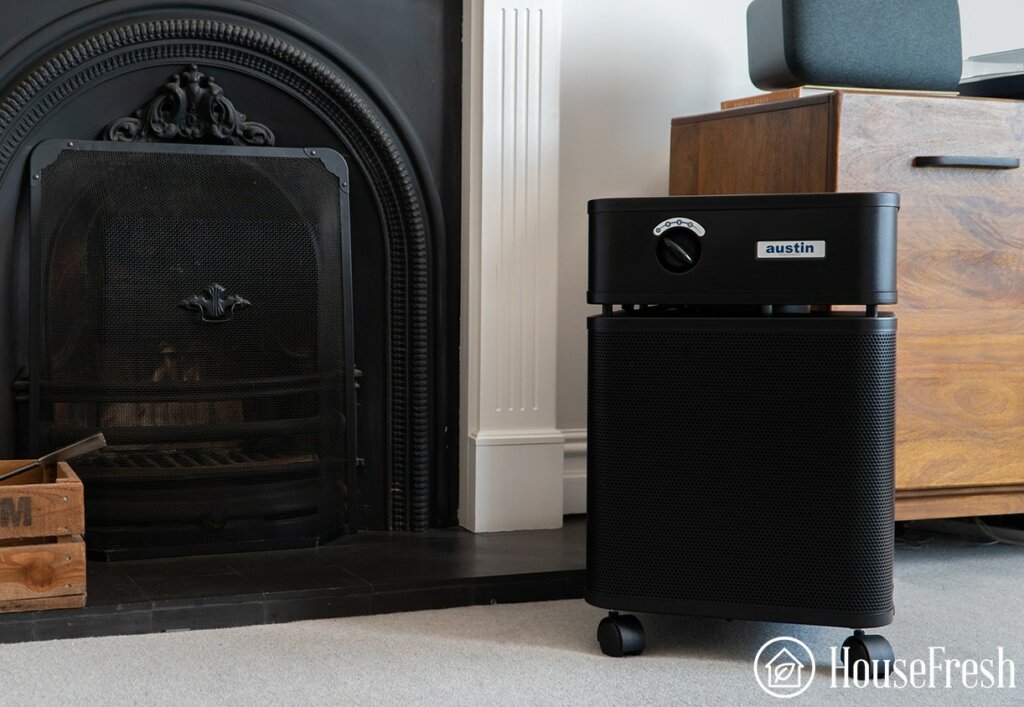
Austin Air has been manufacturing air purifiers from its factory in Buffalo, New York, since 1990. The HealthMate is Austin Air’s most popular device, and it has been designed to effectively remove VOCs and chemicals from the air thanks to a MASSIVE carbon filter packed with 15 lbs of activated carbon and zeolite.
What we really like
What we think could be better
You need to know that this large quantity of carbon will restrict airflow, impacting the HealthMate’s HEPA filter’s ability to quickly remove particles from the air. In our particle removal test, the HealthMate needed 52 minutes to reach PM1 zero — this is 24 minutes slower than what we saw with the IQAir HealthPro Plus at the top of this list. That said, if you’re looking for the best device to remove chemical gases and unwanted odors from the air, then Austin Air HealthMate is the best option for you.
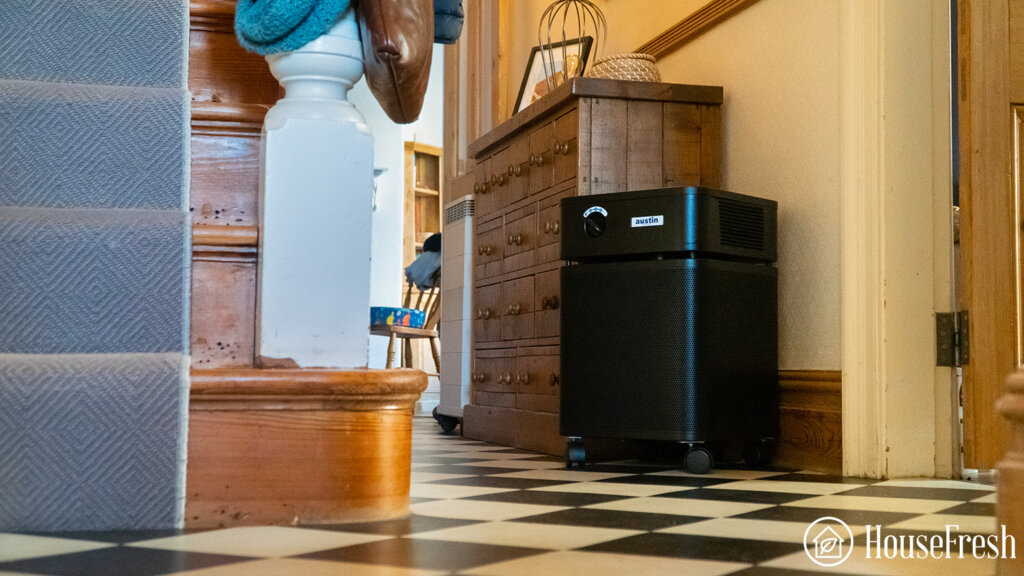
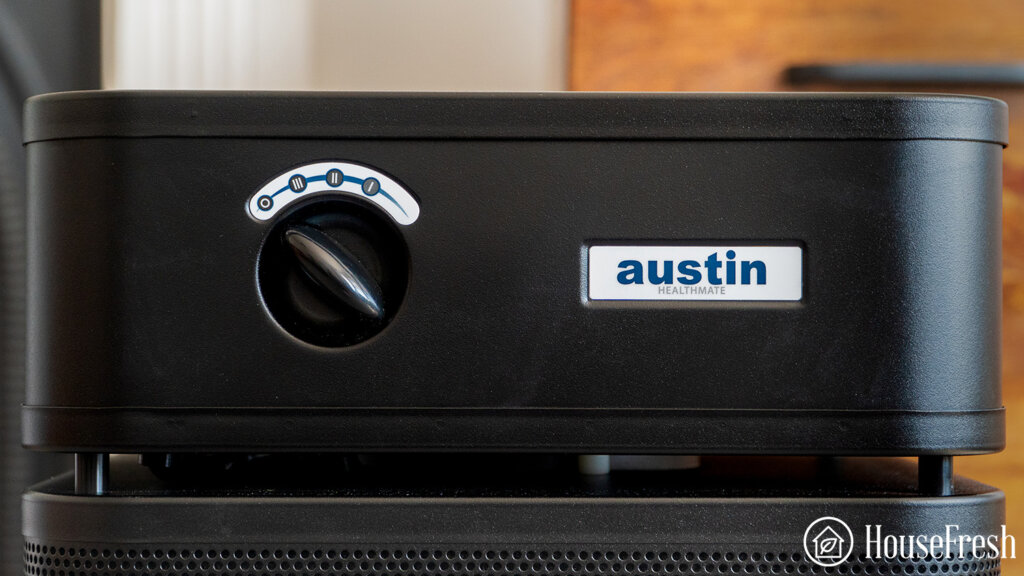

| Clean air delivery rate (CADR): | – Top speed PM1 CADR: 156 cfm – Sub-45 dBA PM1 CADR: 77 cfm – AHAM PM2.5 CADR: 154 cfm (dust) |
| Filter technology: | HEPA particle filter with 15 lb of activated carbon and zeolite mix gas filter |
| Recommended room size: | 234 sq. ft. (5 air changes per hour) |
| Dimensions: | 23H x 14.5W x 14.5D inches (58.4H x 36.8W x 36.8D cm) |
| Weight: | 20.41 lbs (9.26 kg) |
| Noise level in decibels from 3 ft. away: | Speed 1: 42.5 dB Speed 2: 53.2 dB Speed 3: 61.5 dB |
| Electricity consumption in watts: | Standby mode: 0 watts Speed 1: 61.1 watts Speed 2: 85.05 watts Speed 3: 147.6 watts |
| Filter lifespan: | 5 years |
| Manufacturer’s warranty: | 5 years |
| Country of origin: | United States |
| Country of manufacture: | United States (Buffalo, New York) |
3. Best for less than $200: AirFanta 3 Pro (HEPA+Carbon filters)
The AirFanta 3 Pro was a game-changer when we first tested it with its HEPA E11 filters, but now it also comes with four bonded filters that also include pelleted carbon
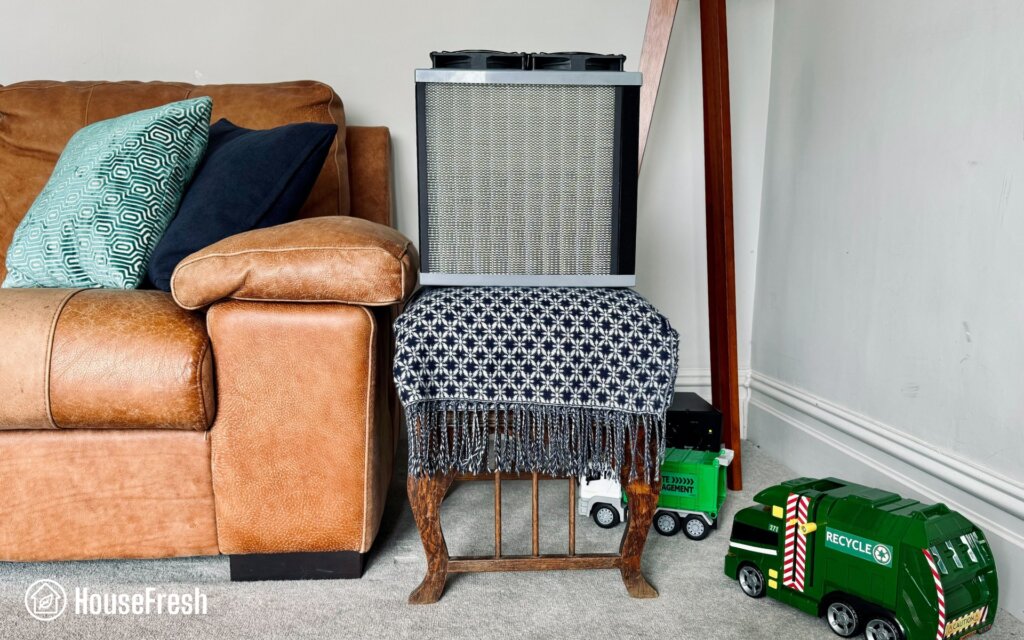
Use the discount code HOUSEFRESH for 5% off when buying directly from AirFanta.
With most cheaper air purifiers coming with only an impregnated fabric carbon filter or tiny amounts, I’m glad to see a good amount of carbon used with the new filters for the AirFanta 3Pro. Unlike most standard HEPA retail designs, the AirFanta allows you to adjust the voltage so you can set the sound level at a rate you are happy with. Adam Wong, Founder of AirFanta got a VOC CADR test that showed it achieved 68 CFM for VOC and gasss and 365 CFM for Particles.
What we really like
What we think could be better
I have heard good things from HouseFresh readers who have even used the carbon version of the AirFanta 3Pro with serious issues with weed smoke, and they found it worked well. For those on a budget who want to deal with VOC, the AirFanta 3 Pro with the carbon filters is currently the best option without building your own air purifier.

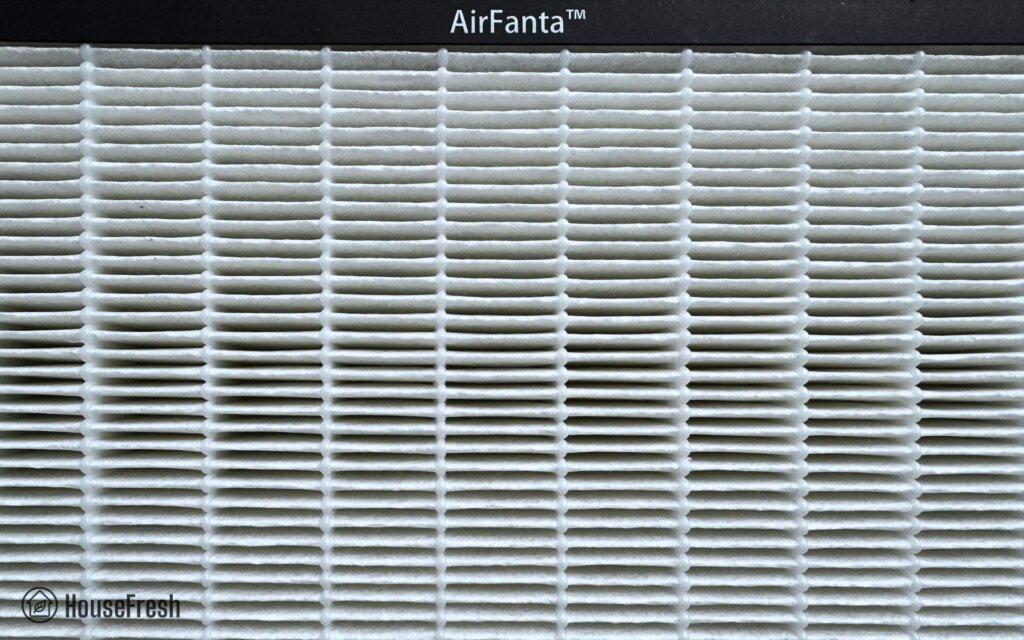
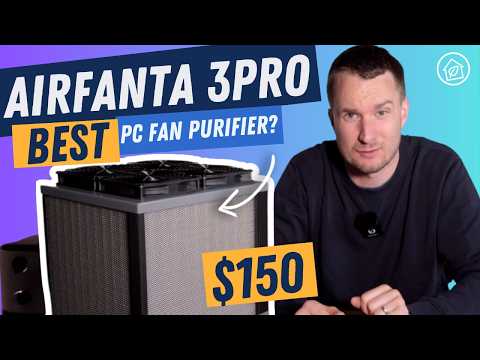
4. Best smart option: Levoit Core 400S (with 0.99 lbs carbon)
If you pair the Core 400S with Levoit’s Smoke Remover filter, you will get 450 grams (0.99 lbs) of pelleted activated carbon.

The Levoit Core 400S is a medium-sized air purifier that can move a lot of air through its cylindrical filter quite fast, completing our particle removal test in 24 minutes (or one minute slower than the 5500-2 above). Levoit made a few different filters for the 400S, each with different amounts of carbon inside. For those looking to tackle VOCs in rooms no larger than 319 sq. ft., I recommend going for the Smoke Remover filter, as it comes with 450 grams of carbon. Alternatively, you can go for the Toxin Absorber filter, as it has 400 grams of carbon inside.
What we really like
What we think could be better
But the reason why I included the Core 400S in this list is because I know some of you will be looking for an air purifier you can manage from your smartphone and connect to your smart home setup. The 400S comes with smartphone connectivity through Levoit’s VeSync app, which is, in my opinion, the best app out there across the nearly 100 air purifiers I have tested here at HouseFresh.
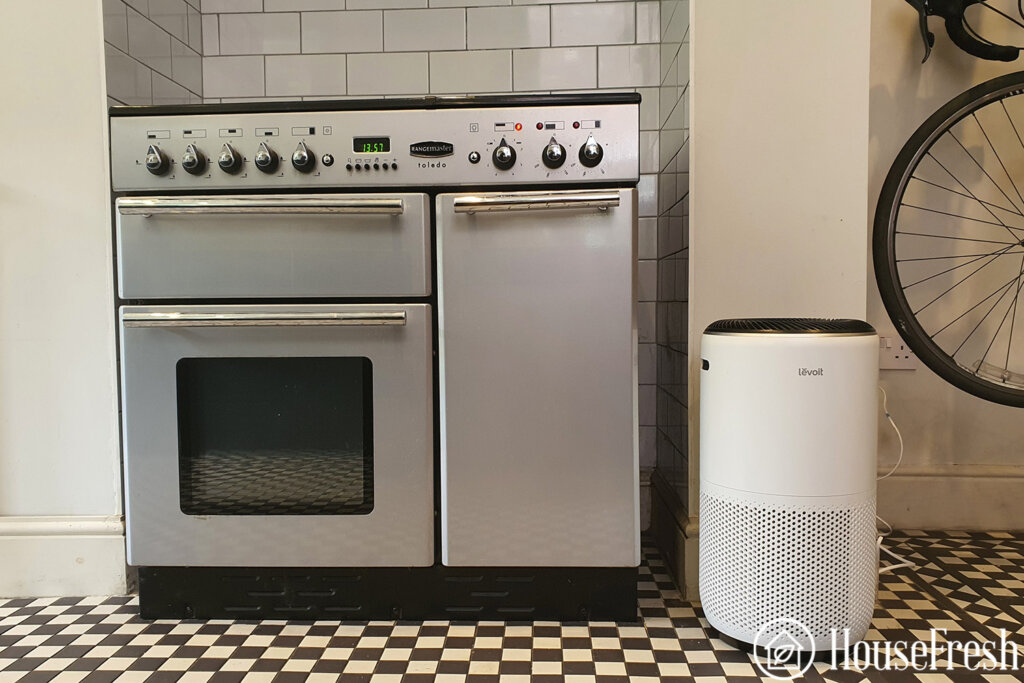
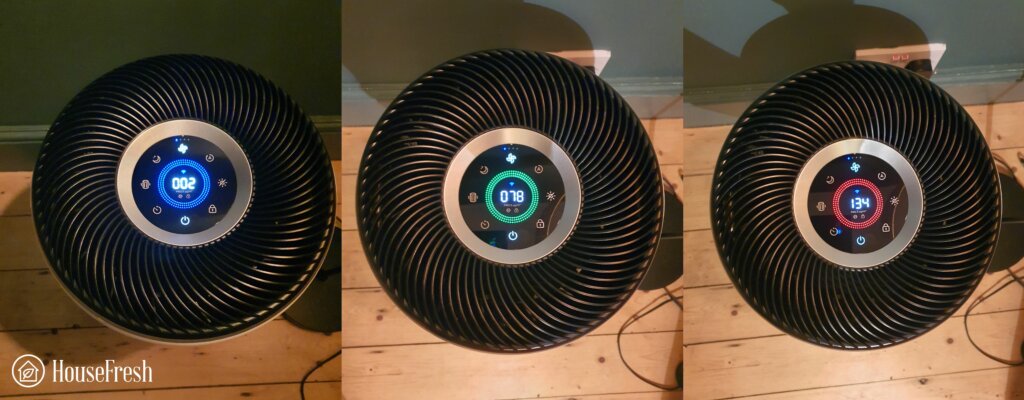
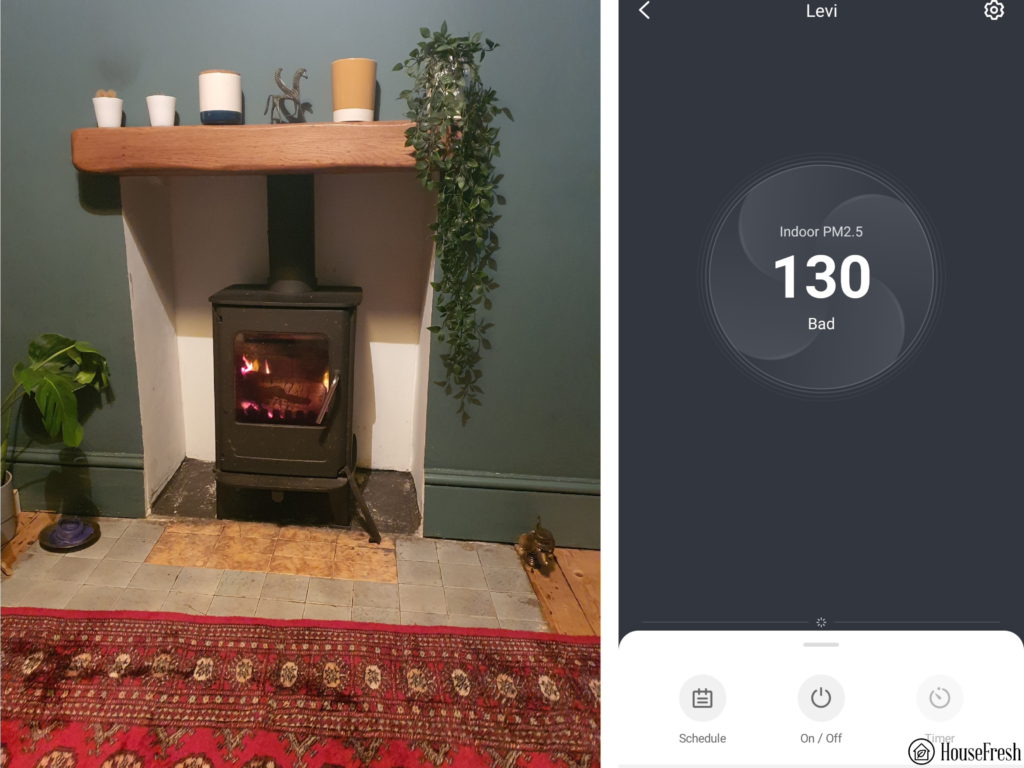
| Clean air delivery rate (CADR): | – Top speed PM1 CADR: 213 cfm – Sub-45 dBA PM1 CADR: 134 cfm – AHAM PM2.5 CADR: 247 cfm (dust) |
| Filtration technology: | Pre-filter for large particles, main filter for airborne particles and activated carbon filter for odors and gasses |
| Recommended room size: | 319 sq. ft. (5 air changes per hour) |
| Dimensions: | 10.8L x 10.8W x 20.5H inches (27.4L x 27.4W x 52H cm) |
| Weight: | 11.2 lbs (5 kg) |
| Filter lifespan: | 6 months |
| Noise level in decibels from 3 ft. away: | Sleep mode: 35.5 dBA Speed 1: 38.3 dBA Speed 2: 43.2 dBA Speed 3: 51.2 dBA Speed 4: 60.3 dBA |
| Electricity consumption in watts: | Standby: 0.93 watts Sleep mode: 3.05 watts Speed 1: 5.28 watts Speed 2: 8.51 watts Speed 3: 16.41 watts Speed 4: 39.64 watts |
| Manufacturer’s warranty: | 2 years |
| Country of origin: | United States |
| Country of manufacture: | China |
5. Best for large spaces: Smart Air Blast Mini (1.56 lbs carbon)
A good choice for those looking for an air purifier for a room of up to 600 sq. ft. BUT make sure to also buy the optional activated carbon filter to tackle VOCs and unwanted odors.

The Blast Mini from Smart Air is a truly powerful air purifier that sits at the top of our leaderboard in terms of its air cleaning performance, completing our particle removal test in just 15 minutes. However, VOCs are not particles, so if you like what the Blast Mini has to offer, then you need to buy the version that comes with 1.5 lbs of pelleted activated carbon.
What we really like
What we think could be better
Similarly to the Austin Air HealthMate above, the Blast Mini’s body is entirely made of metal, and the controls have been simplified to a one-dial operation without any bells or whistles. This is a no-nonsense device with a BIG H13 medical-grade HEPA filter inside and a very powerful fan.

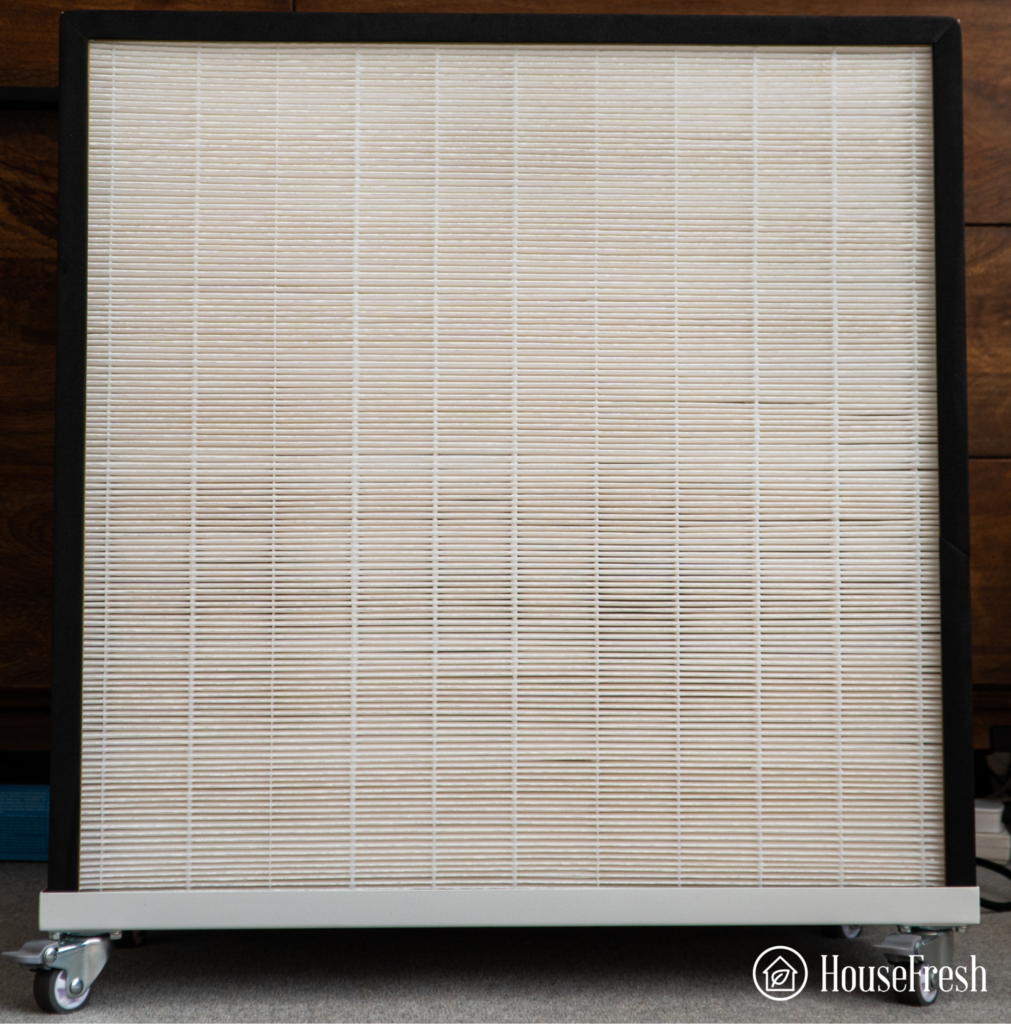

| Clean air delivery rate (CADR): | – Top speed PM1 CADR: 400 cfm – Sub-45 dBA PM1 CADR: 272 cfm – Manufacturer provided CADR: 437 cfm |
| Filter technology: | H13 HEPA filter (and optional pelleted activated carbon filter) |
| Recommended room size: | 600 sq. ft. (5 air changes per hour): |
| Dimensions: | 22.6L x 13W x 24.8H inches (57.5L × 33W × 63H cm) |
| Weight: | 59 lbs (26.8 kg) |
| Noise level in decibels from 3 ft. away: | Speed 1: 44.9 dB Speed 2: 51.2 dB Speed 3: 56.3 dB |
| Electricity consumption in watts: | Standby mode: 0 watts Speed 1: 51.9 watts Speed 2: 87.4 watts Speed 3: 122.7 watts |
| Filter lifespan: | 13 months |
| Manufacturer’s warranty: | 1 year |
| Country of origin: | China |
| Country of manufacture: | China |
Other good air purifiers for VOCs that didn’t make the cut
These devices didn’t make the shortlist but are worth mentioning due to their good performance and solid carbon filters.
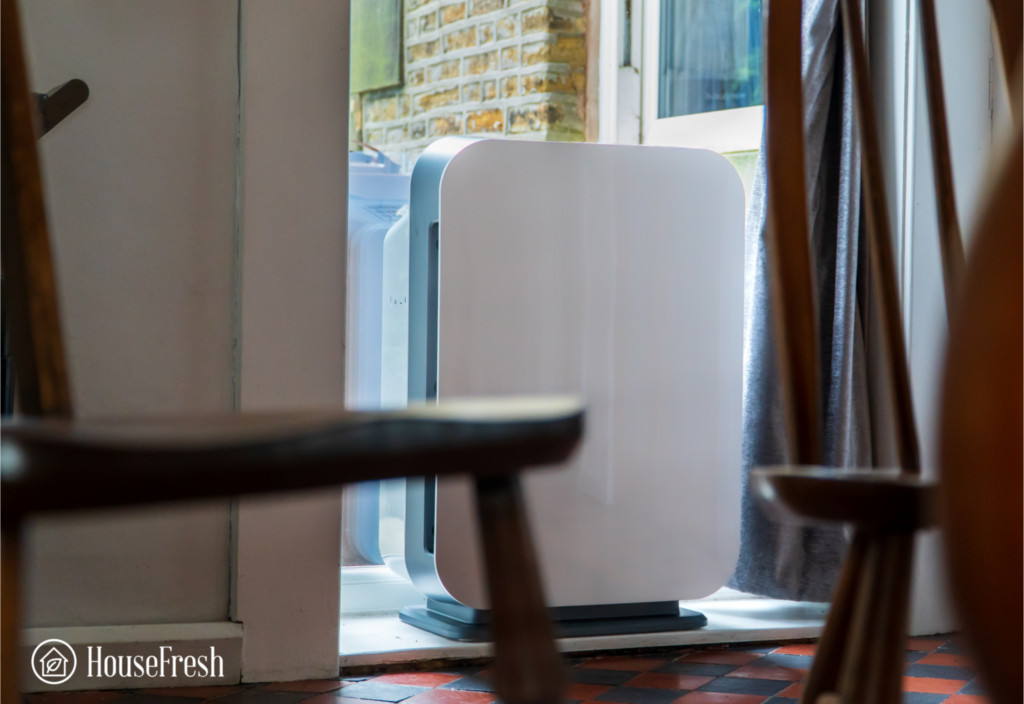
Alen BreatheSmart 75i
Alen has been manufacturing air purifiers since 2005, and the Alen BreatheSmart 75i is their flagship model.
When buying a 75i, you will be prompted to choose a filter from three options designed to tackle different air quality issues. For VOCs, you have to go for Alen’s B7-Fresh True HEPA Filter, which comes with a True HEPA filter plus a good amount of activated carbon.
As with most of the air purifiers on this list for VOCs, the Alen BreatheSmart 75i doesn’t come cheap at $750. It didn’t make the list because we have two other similarly priced units at the top of the shortlist that offer a better warranty for this high price. However, you can get a lifetime warranty for your 75i as long as you set up a filter replacement subscription directly with Alen.
Read our full review of the 75i to find out more about this device.
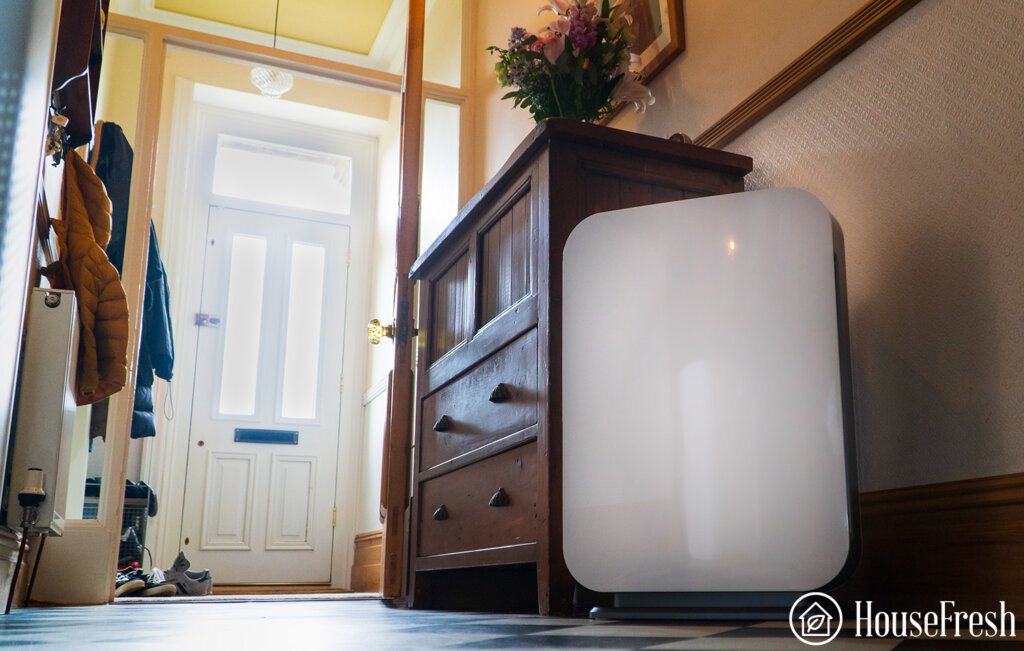

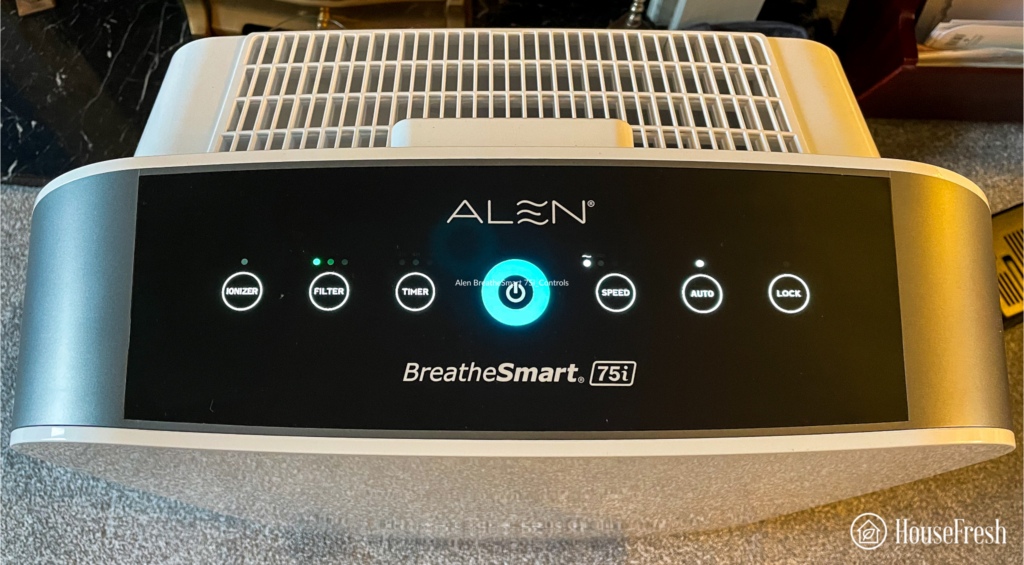
If you like the look of the 75i but feel it will be too big and bulky for your mid-sized room, then look no further than the Alen 45i.

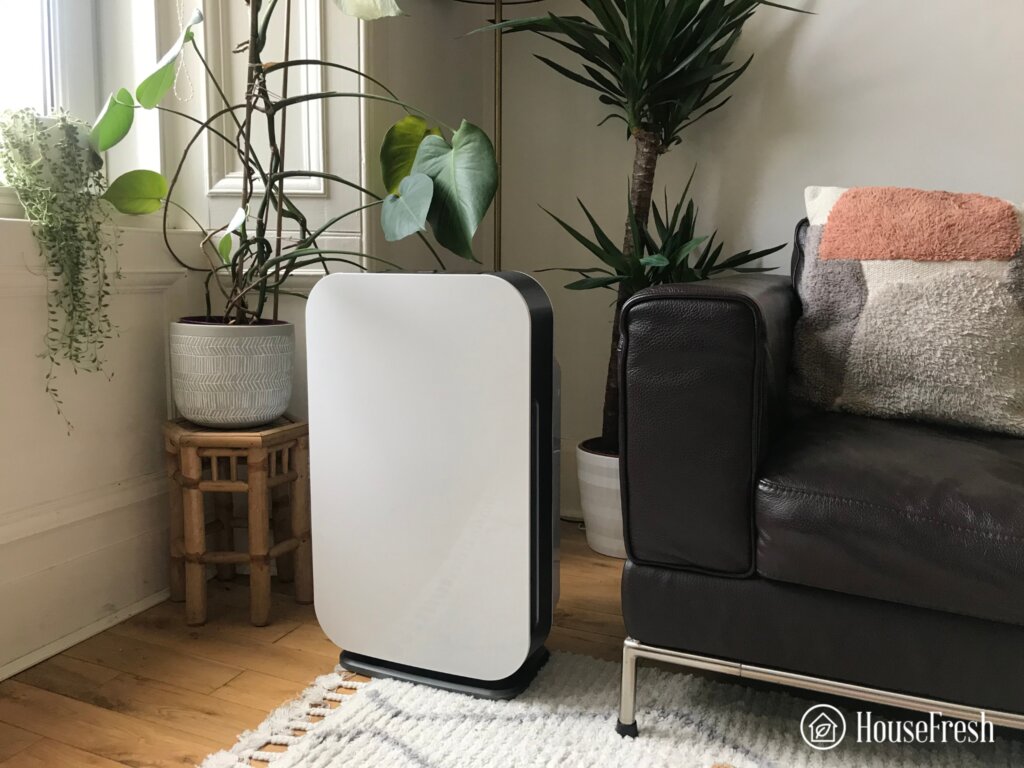

The highest amount of activated carbon is inside the VOC/Smoke filter, which costs an extra $50 but will be well worth it for those needing to tackle VOCs and odors in spaces no larger than 297 sq. ft. Make sure to read our full review of the Alen 45i to find out more about it.
What to look for when buying an air purifier for VOCs
From irritating your eyes and throat to damaging your organs and nervous system, the dangers of VOCs can be severe and must be addressed. Your best option is to pick an air purifier specifically designed to absorb these chemicals. But not all air purifiers are made equal…
1. Choose an air purifier with a large amount of activated carbon
Activated carbon is simply carbon that has been oxidized to create millions of ultra-wide pores that can absorb gas molecules effectively. You can mainly remove VOCs with the help of powerful activated carbon filters, as these will trap gasses and vapors in addition to smells associated to smoke, pets and cooking.
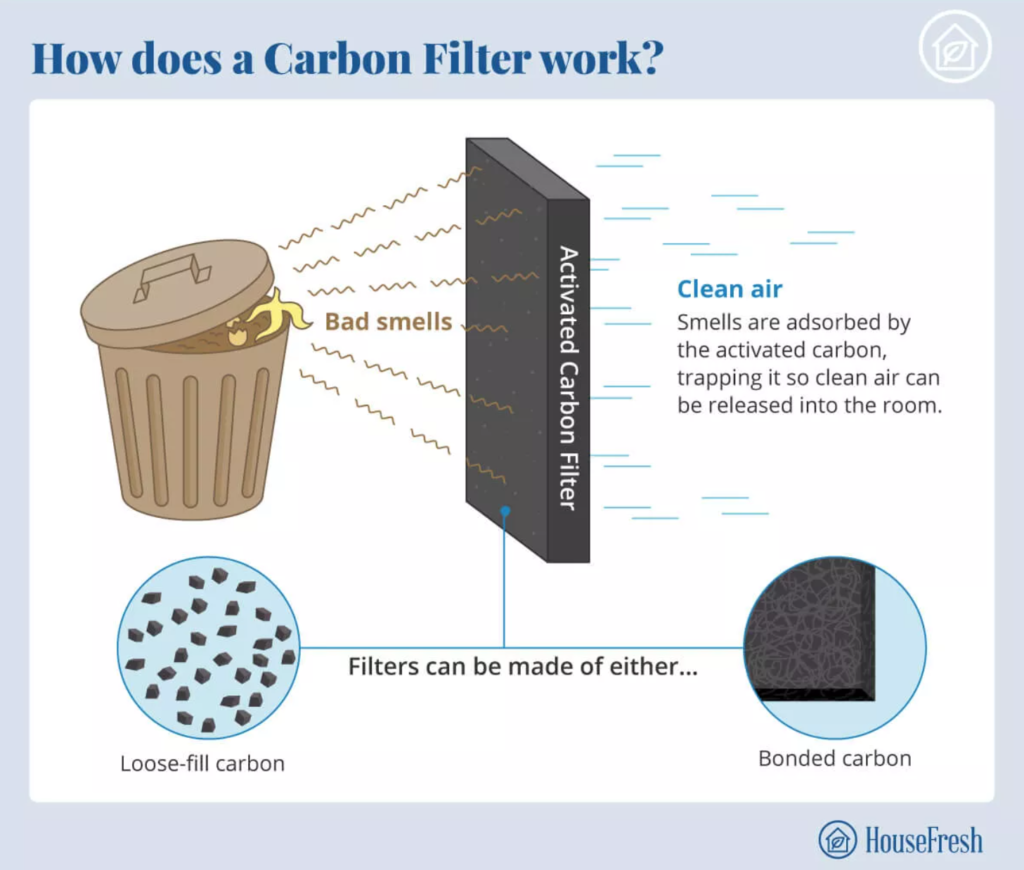
The downside to this type of filtration is that the amount of gases an activated carbon filter can deal with is directly connected to the quantity of activated carbon in the filter itself. That is why you should aim for an air purifier with as much activated carbon as possible.
2. Ensure the air purifier will be powerful enough to clean a space as big as your room
Even though it might feel like a drag, take the time to measure the space where you will be placing your air purifier to ensure that the space is not too big for the air purifier to clean.
The best way to know whether a unit will do a good job in the room you intend to use it in is to use our calculator to see what CADR rating you should look for:
3. Consider noise levels if you’re sensitive to sound
Since your device will likely run at full speed 24/7 while dealing with VOCs in the air, you must consider the associated noise level before purchasing it.
If you can, buy the biggest, most powerful air purifier you can live with. Run it at lower fan speeds, where it will generate less noise while still effectively cleaning the air.
There are quiet air purifiers, but sadly most of them don’t use a large amount of activated charcoal, so they are not a good fit for removing VOCs.
4. Keep upfront costs in mind but also calculate replacement filter costs
These air purifiers are costly, especially the ones that use large amounts of activated carbon. And the thing with carbon filters is that they will become full eventually and you will need to replace them (except for the Winix 5500-2, where you can just wash, dry and reuse the carbon).
As a rule of thumb, always check the price of the air purifier itself and the price of the replacement filter(s). That way you will be able to calculate how much you will need to spend each year to run the device in your home. Air purifier manufacturers include filter lifespan figures on their websites, and we also include this information it the tables with specifications you will find throughout this page.
How we test air purifiers
Saying we tested 104 air purifiers in the last four years sounds great, doesn’t it? But what does testing mean for HouseFresh?
It’s definitely not just getting the units out of their boxes to take some cool editorial pictures for our articles. On the contrary, it is a thorough process that involves reliable testing devices to cover the many aspects of air purifier evaluation.
Air cleaning performance is key, for sure. But we go further. When you decide to invest in an air purifier that will be constantly running at home, things like long-term costs and noise output are also important in a real-world context.
Our testing process includes the following steps:
Step 1. We conduct a particle removal test
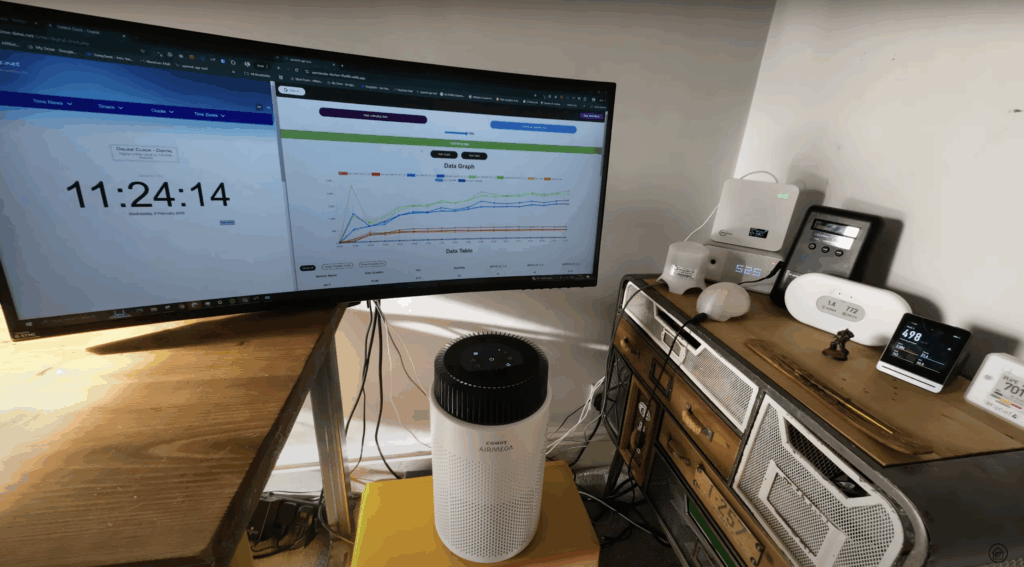
First, we burn some incense to pollute the air. Using our PurpleAir indoor sensor (which we’ve chosen after thorough research), we measure how fast each unit can remove PM10, PM1 and PM2.5 at top fan speed. The PurpleAir sensor provides regular updates on particulate matter levels, allowing us to create graphs showing the evolution of air quality in the room.
Step 2. We assess the power of the fan

We also measure the unit’s fan power with the Testo 410i anemometer. It’s interesting to see the variation in airflow coming out of the unit at every fan speed. Especially considering the AHAM Verified program measures CADR at the highest speed setting.
Step 3. We measure sound levels generated
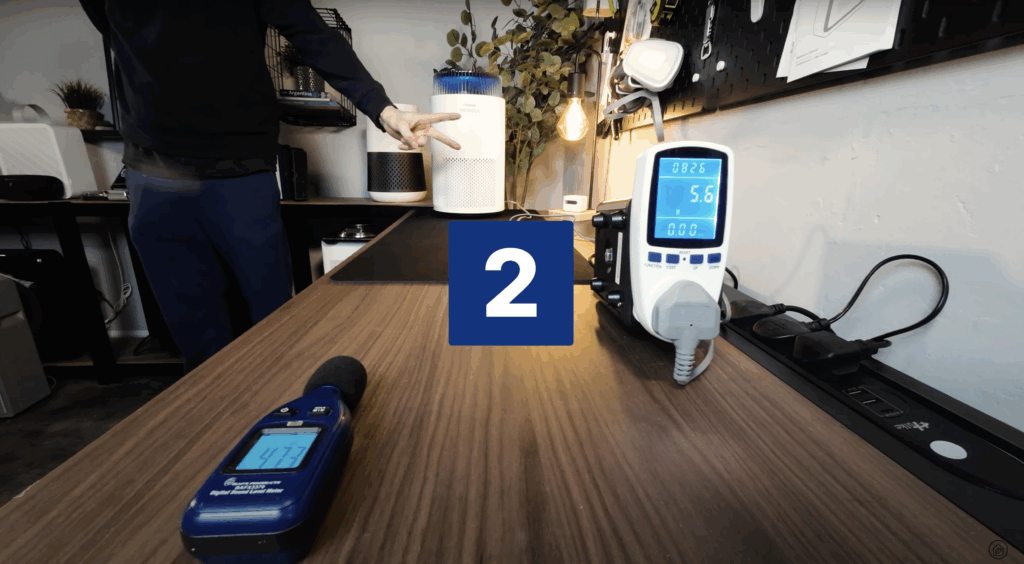
For noise levels, we use a commercial sound meter from 3 ft. away to measure how much noise in decibels (dB) is generated by the air purifier at each fan speed. Like other measurements, the data is displayed in our reviews, but we also share the results on HouseFresh YouTube channel.
Step 4. We measure electricity consumption
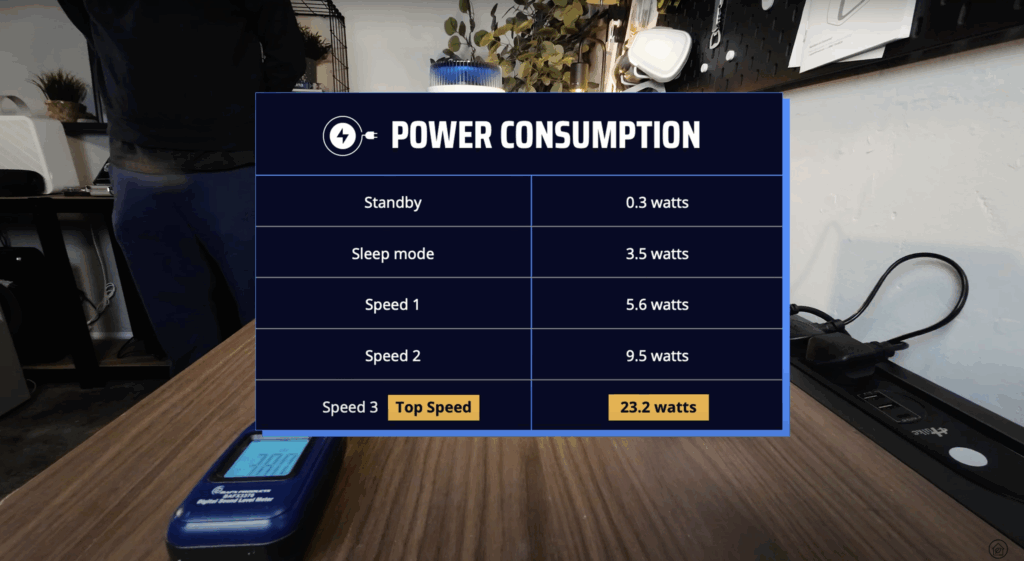
We use a power meter to record how much electricity (in watts) the air purifier consumes when running at each of its fan speeds, including sleep mode and stand-by mode.
Step 5. We estimate yearly maintenance costs
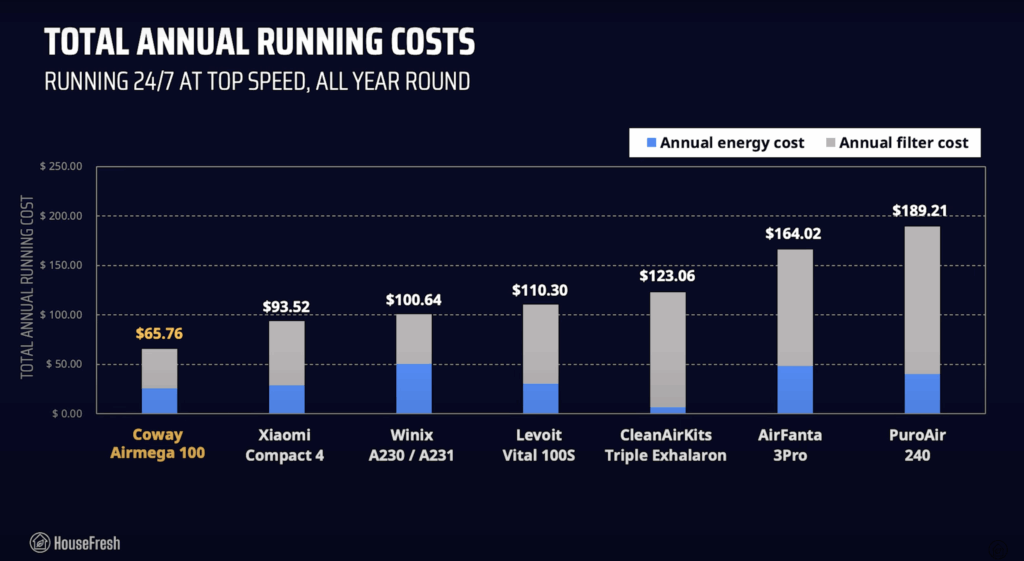
We also calculate the long-term costs you can expect to spend each year to run the air purifier. First, we use the appliance energy calculator from the U.S. Department of Energy to calculate how much money running the air purifier will add to your yearly energy bill. Next, we conduct desk research to determine the costs of genuine and generic replacement filters, using filter lifespan information stated by the manufacturer.
Step 6. Real-life experience
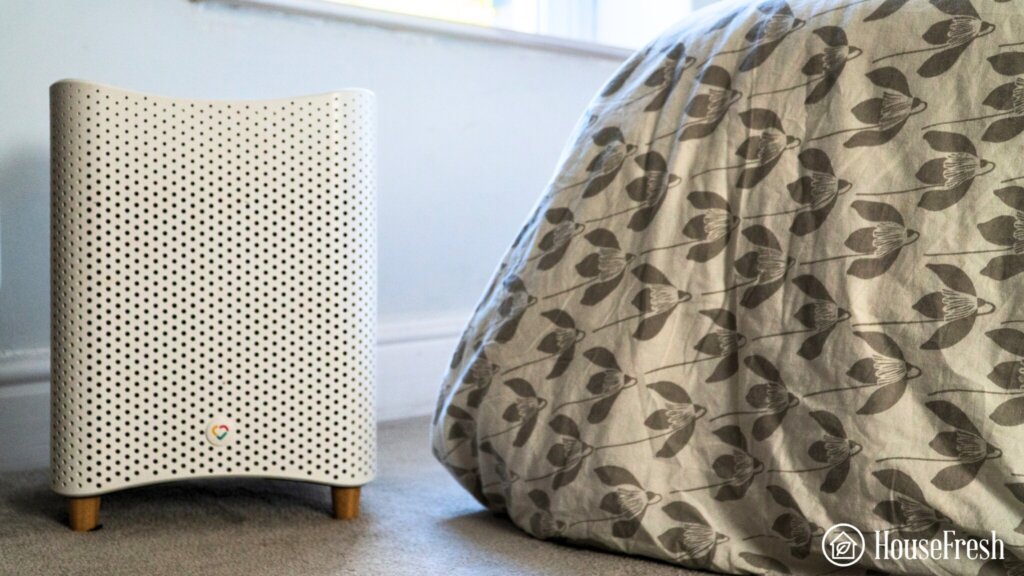
All four steps comprise the core performance evaluation we run on every unit. We know the data is solid. However, there’s something about everyday use that cannot be measured in a lab-test situation. That is why our “final step” is using the air purifier regularly at home in an ordinary context. You can learn a lot by just living with a device.
Common questions about VOCs and air purifiers
When we speak about VOCs, many of them are ubiquitous pollutants that can be found in any home. You will have a higher chance of being exposed to these while sitting inside your home than you ever will be while going outside.
Many of them can vaporize at room temperature, but they can potentially harm your health if they are in high concentrations. How harmful also depends on how long the exposure has been going on.
The Environmental Protection Agency reports regular or prolonged exposure to these volatile organic compounds or VOCs can have nasty health implications.
They may include:
- Eye, nose and throat irritation
- Headaches, loss of coordination and nausea
- Damage to the liver, kidney and central nervous system
- Some organics can cause animal cancer, while others are suspected or known to cause cancer in humans.
Common sources of VOCs in the home include:
| 🚧 Building materials | VOCs can be found in paint, caulks, adhesives, vinyl flooring, insulation materials, and composite wood products. |
| 🧴 Household Products | Common household products such as air fresheners, fuel and cleaning products emit VOC compounds in the air. |
| 💅 Personal Care Products | Formaldehyde is the most common type of VOC. It is found in many products we use daily at home, including nail polish! |
| 🍳 Daily Activities | Some daily activities and habits like cooking, dry cleaning, photocopying, burning wood, and smoking also release VOCs into the air. |
If an air purifier has a large enough amount of activated charcoal, then it will be able to remove VOCs from the air. Our current favorite is the IQAir Healthpro Plus and Levoit Everest.
HEPA can only remove particulate pollutants from the air like dust, dirt or pollen. VOCs are gas, so activated charcoal is the best current technology for removing them from the air. Be wary of technology like UV-C as it has been shown to generate chemical byproducts like ozone during cleaning.
Yes, activated charcoal has been used for decades to remove gas pollutants. The particles inside the activated charcoal trap the gas and eventually become full. This means activated charcoal filters will need replacing every 6 months to a year, especially when used in highly polluted spaces.
The easiest way to test for VOCs is with an air quality monitor – we found the QP Lite performs well, has a respected sensor, and won’t cost more than $100. For our performance tests, we use the latest Purple air indoor sensor that includes a gas sensor from Bosch for detecting VOCs.
Wrapping up
Air purifiers aren’t difficult to find, but when you want them to handle volatile organic compounds (VOCs), you must pay extra attention to what type of filters the device comes with.
HEPA filters are popular but unable to clear odors and chemicals from the air, so you want to choose an air purifier with a gas filter that comes with a large amount of activated carbon.
If you can afford it, then our top choice is the IQAir HealthPro Plus, hands down.
May 12th, 2025
- Swapped out the discontinued Winix 5500-2 for the AirFanta 3 Pro with Carbon
- Added more detail on how we test air purifiers


